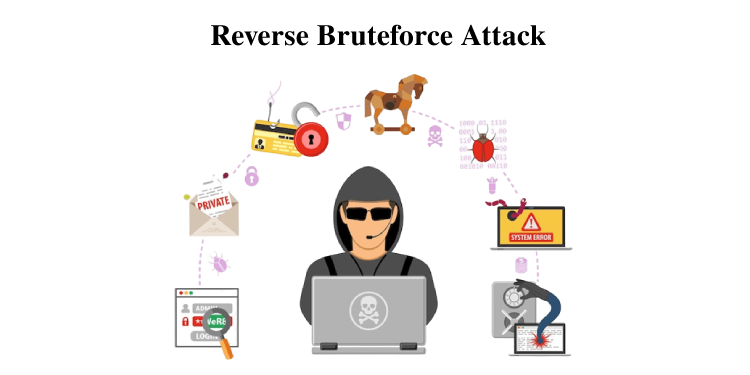The well-known and frequently utilized method of breaking into a system is brute force. The Reverse Brute Force attack is a different method from Brute Force in certain aspects but is very close to it overall. But first, we must comprehend the former (Brute Force) in order to comprehend the latter.
Brute Force Attack:
Users regularly utilize common word patterns as passwords, including dates of birth, anniversaries, street addresses, and other everyday information. Theoretically, a person could use brute force by trying every character combination in the password until he finds one that works. A password can be used to gain access to a computer or network once it has been found. The ability of the brute force to quickly test many passwords makes it an appealing attack strategy for hackers in some circumstances of weak passwords. However, if the situation is not favorable, it is a time and energy-consuming strategy because it can take a lot of time to test out a lot of hypotheses. Additionally, the hacker must verify each password character that can be used (such as letters, digits, and special characters) inside the password’s character set. As a result, lengthier passwords will require more resources and require more attempts to crack.
Please refer to Brute Force Attack for more information
Reverse Brute Force Attack:
Reverse brute force is a sort of attack that is very similar to brute force in that it targets all users of the database system instead of just the one that is being targeted. In order to get access to the account, Reverse Brute Force involves an automated technique that tests a set of widely used login credentials on a substantial number of database users. The primary goal of this attack is to access user accounts without authorization by forcing the same password on all users.

Initialization:
First, the attacker gathers a list of frequently used passwords from accounts that have already been compromised or through the use of Social Engineering. The attacker then uses a tool like THC Hydra to process this list onto a wide number of people. As soon as the credential matches the account, the attacker is able to access the account and attempt to fiddle with the settings while grabbing the information and data needed to accomplish his attack goal.
Process:
The process is very simple and on a broader basis carried out in these three simple steps:
- Firstly, the attacker gets a list of commonly used passwords from a leaked database.
- Then, using tools like THC Hydra, the password is brute-forced against a sizable number of users in the web application’s database with the goal of gaining access to the account and meddling with it.
- Once the attacker obtains access to the user’s account and the password is a match, he can carry out the attack’s intended objective.
Countermeasures:
For Users:
- Make sure Two-Factor Authentication is turned on for all online accounts to prevent unauthorized access even if the password has been compromised.
- Use unique passwords for each account you have because using the same password for many accounts increases the likelihood of a hack.
- Frequently change your password.
- Make sure your password hasn’t been revealed via a data breach.
For Organizations:
- Enable a strong password policy for all users, especially root accounts on servers, to demand the usage of strong passwords that are challenging for hackers to guess or crack.
- Use a trustworthy password hashing algorithm, and store passwords securely.
- Install auditing software that keeps track of server changes so that any unauthorized changes can be discovered and handled right away.
- Name a security software that will monitor the database for any unauthorized changes and, if necessary, take the appropriate action.
- Make a system that, if any suspicious activity is discovered, will automatically notify the appropriate people.
- Ensure that your organization has a robust security system in place to safeguard all of your client’s data as well as the brand’s reputation.




